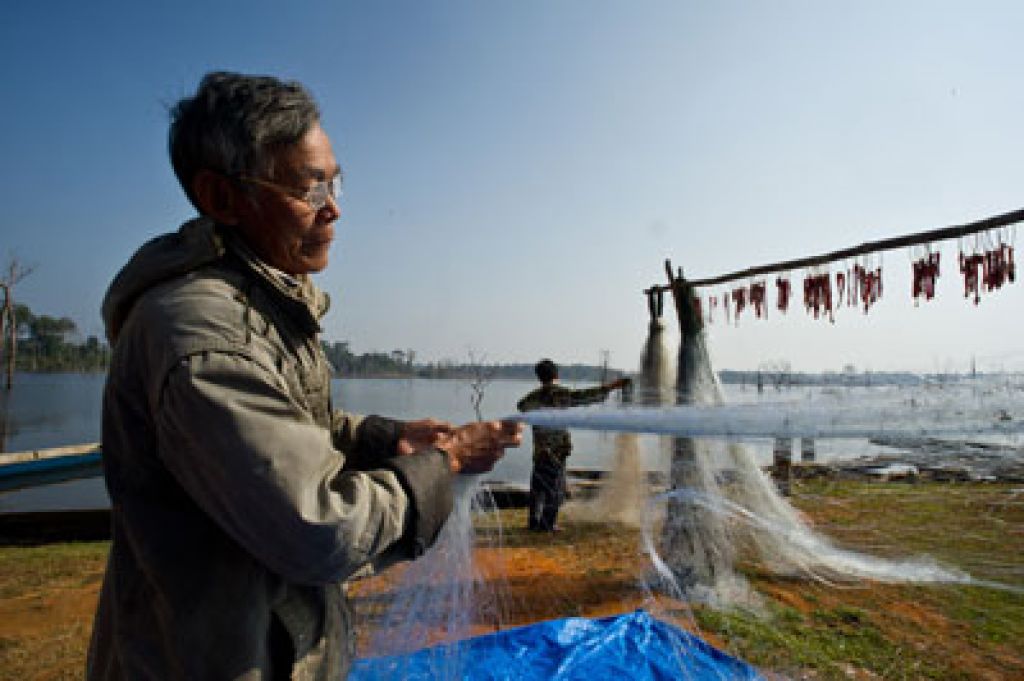Countries of the Mekong River: 12 Things to Know

The Mekong River Basin is the richest river basin in the world in terms of fish stocks, and its productivity is directly linked to the livelihood of people in the region. Photo: ADB.
The six nations that share the Mekong River celebrate this year 2 decades of economic cooperation in the Greater Mekong Subregion Program, which was established with the assistance of ADB in 1992.
- The Greater Mekong Subregion (GMS) is made up of Cambodia, the People's Republic of China (PRC, specifically Yunnan Province and Guangxi Zhuang Autonomous Region), the Lao People's Democratic Republic (Lao PDR), Myanmar, Thailand, and Viet Nam.
Source: ADB. 2015. Greater Mekong Subregion Economic Cooperation Program: Overview - The subregion is a natural economic area bound together by the Mekong River, with a surface of 2.6 million square kilometers and a combined population of about 326 million.
Source: ADB. 2015. Greater Mekong Subregion Economic Cooperation Program: Overview - Gross domestic product (GDP) in the subregion has grown at over 8% per year on average during the past 2 decades or so. Real per capita incomes have more than tripled over the same period.
Source: ADB. 2012. The Greater Mekong Subregion Economic Cooperation Program Strategic Framework (2012-2022) - Supported by ADB and other donors, the GMS Program covers nine priority sectors: transport, energy, telecommunications, environment, human resource development, tourism, trade, private sector investment, and agriculture.
Source: ADB. 2015. Greater Mekong Subregion Economic Cooperation Program: Overview - The GMS Program is helping the participating countries achieve the Millennium Development Goals through the so-called three "Cs": increased connectivity, improved competitiveness, and a greater sense of community.
Source: ADB. 2015. Greater Mekong Subregion Economic Cooperation Program: Overview - By the end of 2011, ADB had extended loans and grants totaling $5.1 billion for 56 investment projects in the subregion with a total project cost of $15.0 billion.
Source: ADB. 2012. Ecological Footprint and Investment in Natural Capital in Asia and the Pacific - A major achievement of the GMS Program is improved transport connectivity in the subregion as exemplified in the main GMS economic corridors: the East-West, the North-South, and the Southern.
Source: ADB. 2012. The Greater Mekong Subregion Economic Cooperation Program Strategic Framework (2012-2022) - In energy, the GMS Program has helped lay the basis for grid interconnection in the subregion. A number of major hydropower projects with private sector participation were developed under the program framework.
Source: ADB. 2012. The Greater Mekong Subregion Economic Cooperation Program Strategic Framework (2012-2022) - The subregion is one of the most biologically diverse places on the planet and is home to numerous endangered species.
Source: ADB. 2012. The Greater Mekong Subregion Economic Cooperation Program Strategic Framework (2012-2022) - Energy pricing and other market imperfections need to be addressed to propagate energy efficiency investments.
Source: ADB. 2012. Ecological Footprint and Investment in Natural Capital in Asia and the Pacific - The Mekong River Basin is the richest river basin in the world in terms of fish stocks, and its productivity is directly linked to the livelihood of people in the region.
Source: ADB. 2012. Ecological Footprint and Investment in Natural Capital in Asia and the Pacific - For the next decade, the GMS Program will focus on new measures to strengthen regional cooperation, including more effective resource utilization and more careful balancing of development with environmental concerns.
Source: ADB. 2012. The Greater Mekong Subregion Economic Cooperation Program Strategic Framework (2012-2022)
Last Updated: 1 September 2012
